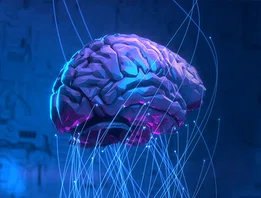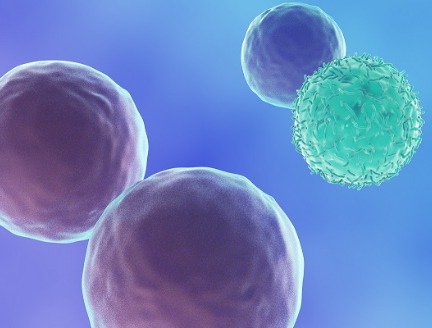


restorative medicine
Science Finds a Way to Explain the Positivity of Music
Science Finds a Way to Explain the Positivity of Music
Houston Methodist and Rice University researchers quantify the influence music has on the brain
Houston Methodist and Rice University researchers quantify the influence music has on the brain
Music, according to historians, has been a fundamental part of every culture, essentially since the beginning of recorded history. The earliest form likely was oral singing, followed by sounds such as clapping or foot stomping. The oldest song in existence is a Hurrian (in today’s Syria) hymn, composed between 1450-1200 BCE.
Instruments such as harps and flutes began appearing around 4000 BCE in Egyptian society. Music played a significant role in ancient Roman, African and Arab culture, and the Greeks associated it with mathematics and knowledge. It has played a role in religious ceremonies as well as war.

Christof Karmonik, PhD

Todd Frazier, MM, PS
This cross-cultural expression of humanity has long been thought to have healing powers, and now a team of researchers at Houston Methodist and Rice University has been able to scientifically show there is merit in that belief.
By better understanding different brain activation patterns in response to non-pharmacological stimuli, such as music and language, clinicians can better harness its potential in therapy, rehabilitation and human performance.
A team of researchers at Houston Methodist (Christof Karmonik, PhD, and Todd Frazier, MM, PS) and Rice University (Melia Bonomo, PhD, and Anthony Brandt, PhD) studied music and brain connectivity. The study, “Music to My Ears: Neural modularity and flexibility differ in response to real-world music stimuli”, was part of a larger clinical investigation into music listening and stroke recovery at Houston Methodist Hospital’s Center for Performing Arts Medicine.

In a music and brain connectivity study that is part of a larger clinical investigation into music listening and stroke recovery at Houston Methodist Hospital’s Center for Performing Arts Medicine, functional magnetic resonance imaging (fMRI) was performed on healthy participants while they listened to self-selected music to which they felt a positive emotional attachment, as well as culturally familiar music (J.S. Bach), culturally unfamiliar music (Gagaku court music of medieval Japan), and several excerpts of speech. There was a marked contrast among the whole-brain networks during the different types of auditory pieces, in particular for the unfamiliar music.
The study showed there was a marked contrast among the whole-brain networks of people listening to different types of auditory pieces, particularly between familiar and unfamiliar music. The network properties that were investigated were modularity — to what degree brain regions are interacting in communities — and flexibility — the rate at which brain regions switch the communities to which they belong.
Functional magnetic resonance imaging (fMRI), which can determine what part of the brain is active in processing sound, was performed on healthy participants at the Houston Methodist Translational Imaging Center while they listened to self-selected music to which they felt a positive emotional attachment. They also listened to culturally familiar music by Johann Sebastian Bach, culturally unfamiliar music (Gagaku court music of medieval Japan) and several excerpts of public speeches.
During the self-selected and Bach tracks, representing a range of familiarity, participants’ whole-brain networks exhibited modularity that significantly coordinated with flexibility.
Meanwhile, when the Gagaku music was played, representing unfamiliar sounds, the coordinated relationship between brain network modularity and flexibility largely disappeared. In addition, the auditory cortex’s flexibility was similar during all the music listening, but more flexible in response to the Gagaku piece.
“Taking it to a more abstract level, there’s a positive, emotional attachment to music in the brain. Any time you're trying to figure out memories, they’re in the emotions. An analogy is, when you use your muscles, you get oxygenated blood to the muscles, so the idea was to have participants listen to different genres of music and measure how the brain, like a muscle, responds,” said Karmonik.
The results suggest that modularity and flexibility measures of whole-brain activity have the potential to lead to new insights into the complex neural functions that occur during music perception.
“I was saying, ‘Hey, I'm quantifying something that I couldn't really explain before,’” said Karmonik.
“There's a basket of studies that we've been pursuing here that all really looked to answer the question — how we can better understand the impact music stimulus has on the brain, and can we potentially harness that impact or better harness that impact to serve clinical, medical and health and human performance goals,” said Frazier.
Taking it to a more abstract level, there’s a positive, emotional attachment to music in the brain. Any time you're trying to figure out memories, they’re in the emotions. An analogy is, when you use your muscles, you get oxygenated blood to the muscles, so the idea was to have participants listen to different genres of music and measure how the brain, like a muscle, responds.
Christof Karmonik, PhD
Associate Research Professor of Translational Imaging
Most of the studies the team has conducted have been fundamental investigations to gauge a better understanding of the potential of music in the health continuum, Frazier said.
“We all often hear music that we've never heard before, if it’s a brand new song or music of different cultures that would be very unfamiliar to our ears. And then there's the music we do and don't like. But what does that all look like in the brain once someone develops an opinion of a piece of music? These were just questions we wanted more information about,” said Frazier. “We looked at my brain listening to a piece of music that I do have a very strong positive emotional connection — it reminds me of my grandparents. And we noticed that that piece of music brought more activation or processing in the emotion and memory areas of the brain. The same exercise was performed using unfamiliar music. And we noticed that this brought more activation or processing in the focused attention areas of the brain”
The initial findings were interesting and the study was expanded to include men and women of different ages and cultures, with different stimuli, including both familiar recited language as well as unfamiliar language never heard before from different cultures and familiar and unfamiliar music from different and extinct cultures. The team found the activation patterns were very similar in each participant and wondered if someone trying to recover from a brain injury could recover through prescribed listening exercises, using this information to “target” areas of the brain in need of stimulation. This is where we began offering individualized listening sessions to stroke patients at Houston Methodist.
Participants listened three times a day during a 20-minute session for 90 days and were asked to focus on active listening. We found that resting state brain connectivity was strengthened after 90-days of the music listening compared with listening to audiobooks. The results demonstrate the potential music has for patients.
“We specifically created a music history profile for each one of these patients and the listening exercises they did, went back and forth between the emotionally familiar and nonfamiliar music so that during a listening session, which would usually be about 20 to 25 minutes, their brain would have gone back and forth with the idea that it would have increased oxygenation to a variety of different parts of their brain that would potentially help support their recovery or aid in recovery. We developed a listening regime that we felt was a significant enough intervention that could have an impact,” said Frazier.
The team’s findings were presented at the World Stroke Conference 2022.
Music, according to historians, has been a fundamental part of every culture, essentially since the beginning of recorded history. The earliest form likely was oral singing, followed by sounds such as clapping or foot stomping. The oldest song in existence is a Hurrian (in today’s Syria) hymn, composed between 1450-1200 BCE.
Instruments such as harps and flutes began appearing around 4000 BCE in Egyptian society. Music played a significant role in ancient Roman, African and Arab culture, and the Greeks associated it with mathematics and knowledge. It has played a role in religious ceremonies as well as war.

Christof Karmonik, PhD

Todd Frazier, MM, PS
This cross-cultural expression of humanity has long been thought to have healing powers, and now a team of researchers at Houston Methodist and Rice University has been able to scientifically show there is merit in that belief.
By better understanding different brain activation patterns in response to non-pharmacological stimuli, such as music and language, clinicians can better harness its potential in therapy, rehabilitation and human performance.
A team of researchers at Houston Methodist (Christof Karmonik, PhD, and Todd Frazier, MM, PS) and Rice University (Melia Bonomo, PhD, and Anthony Brandt, PhD) studied music and brain connectivity. The study, “Music to My Ears: Neural modularity and flexibility differ in response to real-world music stimuli”, was part of a larger clinical investigation into music listening and stroke recovery at Houston Methodist Hospital’s Center for Performing Arts Medicine.
In a music and brain connectivity study that is part of a larger clinical investigation into music listening and stroke recovery at Houston Methodist Hospital’s Center for Performing Arts Medicine, functional magnetic resonance imaging (fMRI) was performed on healthy participants while they listened to self-selected music to which they felt a positive emotional attachment, as well as culturally familiar music (J.S. Bach), culturally unfamiliar music (Gagaku court music of medieval Japan), and several excerpts of speech. There was a marked contrast among the whole-brain networks during the different types of auditory pieces, in particular for the unfamiliar music.
The study showed there was a marked contrast among the whole-brain networks of people listening to different types of auditory pieces, particularly between familiar and unfamiliar music. The network properties that were investigated were modularity — to what degree brain regions are interacting in communities -- and flexibility — the rate at which brain regions switch the communities to which they belong.
Functional magnetic resonance imaging (fMRI), which can determine what part of the brain is active in processing sound, was performed on healthy participants at the Houston Methodist Translational Imaging Center while they listened to self-selected music to which they felt a positive emotional attachment. They also listened to culturally familiar music by Johann Sebastian Bach, culturally unfamiliar music (Gagaku court music of medieval Japan) and several excerpts of public speeches.
During the self-selected and Bach tracks, representing a range of familiarity, participants’ whole-brain networks exhibited modularity that significantly coordinated with flexibility.
Meanwhile, when the Gagaku music was played, representing unfamiliar sounds, the coordinated relationship between brain network modularity and flexibility largely disappeared. In addition, the auditory cortex’s flexibility was similar during all the music listening, but more flexible in response to the Gagaku piece.
“Taking it to a more abstract level, there’s a positive, emotional attachment to music in the brain. Any time you're trying to figure out memories, they’re in the emotions. An analogy is, when you use your muscles, you get oxygenated blood to the muscles, so the idea was to have participants listen to different genres of music and measure how the brain, like a muscle, responds,” said Karmonik.
The results suggest that modularity and flexibility measures of whole-brain activity have the potential to lead to new insights into the complex neural functions that occur during music perception.
“I was saying, ‘Hey, I'm quantifying something that I couldn't really explain before,’” said Karmonik.
“There's a basket of studies that we've been pursuing here that all really looked to answer the question — how we can better understand the impact music stimulus has on the brain, and can we potentially harness that impact or better harness that impact to serve clinical, medical and health and human performance goals,” said Frazier.
Taking it to a more abstract level, there’s a positive, emotional attachment to music in the brain. Any time you're trying to figure out memories, they’re in the emotions. An analogy is, when you use your muscles, you get oxygenated blood to the muscles, so the idea was to have participants listen to different genres of music and measure how the brain, like a muscle, responds.
Christof Karmonik, PhD
Associate Research Professor of Translational Imaging
Most of the studies the team has conducted have been fundamental investigations to gauge a better understanding of the potential of music in the health continuum, Frazier said.
“We all often hear music that we've never heard before, if it’s a brand new song or music of different cultures that would be very unfamiliar to our ears. And then there's the music we do and don't like. But what does that all look like in the brain once someone develops an opinion of a piece of music? These were just questions we wanted more information about,” said Frazier. “We looked at my brain listening to a piece of music that I do have a very strong positive emotional connection — it reminds me of my grandparents. And we noticed that that piece of music brought more activation or processing in the emotion and memory areas of the brain. The same exercise was performed using unfamiliar music. And we noticed that this brought more activation or processing in the focused attention areas of the brain”
The initial findings were interesting and the study was expanded to include men and women of different ages and cultures, with different stimuli, including both familiar recited language as well as unfamiliar language never heard before from different cultures and familiar and unfamiliar music from different and extinct cultures. The team found the activation patterns were very similar in each participant and wondered if someone trying to recover from a brain injury could recover through prescribed listening exercises, using this information to “target” areas of the brain in need of stimulation. This is where we began offering individualized listening sessions to stroke patients at Houston Methodist.
Participants listened three times a day during a 20-minute session for 90 days and were asked to focus on active listening. We found that resting state brain connectivity was strengthened after 90-days of the music listening compared with listening to audiobooks. The results demonstrate the potential music has for patients.
“We specifically created a music history profile for each one of these patients and the listening exercises they did, went back and forth between the emotionally familiar and nonfamiliar music so that during a listening session, which would usually be about 20 to 25 minutes, their brain would have gone back and forth with the idea that it would have increased oxygenation to a variety of different parts of their brain that would potentially help support their recovery or aid in recovery. We developed a listening regime that we felt was a significant enough intervention that could have an impact,” said Frazier.
The team’s findings were presented at the World Stroke Conference 2022.
Bonomo, M. E., Brandt, A. K., Frazier, J. T., & Karmonik, C. (2022). Music to My Ears: Neural modularity and flexibility differ in response to real-world music stimuli. IBRO Neuroscience Reports, 12, 98-107. https://doi.org/10.1016/j.ibneur.2021.12.007
Erin Graham
September 2023







